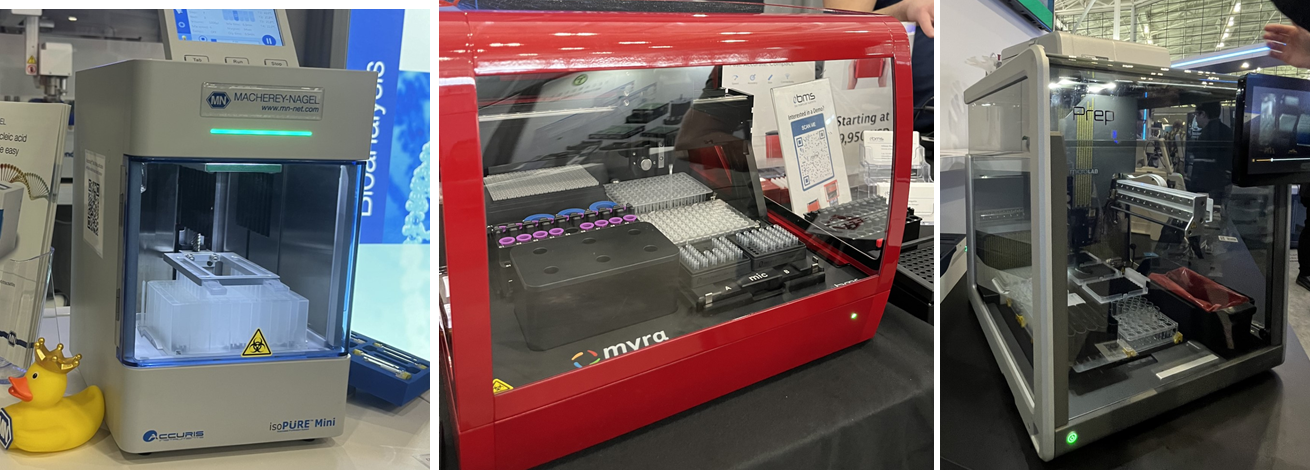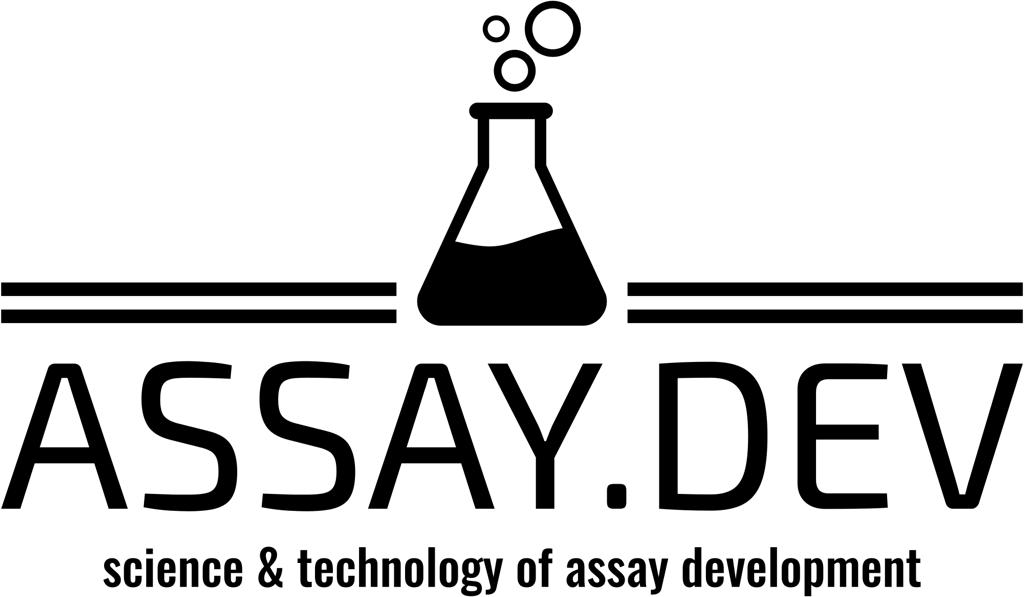
The main event of the Society for Laboratory Automation and Screening (SLAS) is its annual International Conference and Exhibition which rotates between Boston and San Diego. If you are new to SLAS, I highly recommend visiting their expo which you can purchase 1-day or three-day passes for a relatively low price (<300$). As a pro tip, you can most likely get free guess passes from your lab suppliers, especially those related to lab automation or high-throughput instruments. This year (2024) SLAS was February 3-7, 2024 at the Boston Convention and Exhibition Center. https://www.slas.org/events-calendar/slas2024-international-conference-and-exhibition/ I am going to capture a few observations from 1-day my visit here.
Something I noticed in the Expo hall was the growing trend of specialized affordable small liquid-handling robots. These are benchtop robots with less flexibility which are designed to execute a particular task, such as PCR plate setup, and nucleic acid extraction. Macherey-Nagel isoPure mini and MagBinder from Omega-Bio tek are designed for magnetic-bead-based nucleic acid extraction of 1-24 samples. The other system was Myra from BMS which can prep reaction tubes to use with their MIC qPCR. One more flexible system is the Hamilton Microlab Prep. It costs $20-30k and can have up to two independent 8-prob heads. It controls with an integrated tablet and an App-like software. There are also a few devices (heat, cooler, shaker) and accessories (reservoirs, tube, and plate adapters) available that can improve the versatility of the system. It has a limited working deck (9 positions) but I recommend checking it if you are looking to introduce automation to your workflow. It can be a great option for simple tasks such as plate prep, serial dilutions, transfer, and cherry-picking. https://www.hamiltoncompany.com/automated-liquid-handling/platforms/microlab-prep

Figure 1. Example of small footprint robots in SLAS2024 that can simplify low throughput specialized applications.
The other interesting innovations were around total lab automation. Biosero Omron is a mobile robot that can move labware between workstations with equipment spread throughout the laboratory, across multiple floors, or even different buildings. Mobile robots can enhance the modality and flexibility of the workflow but would need designated infrastructure and a high level of integration. Nonetheless, it is exciting to see a robot moving a microplate from an incubator to a centrifuge across the room!
There were also a few floating transport systems that combined the advantages of conventional systems and supplemented them with a unique magnetic levitation technology. With their floating 2D transport, they can rotate, tilt, and elevate microplates which opens up a whole host of new possibilities. For instance, Hamilton integrated a Beckhoff XPlanar with a Vantage system (called Vantage Plus) to virtually extend the deck in any direction. Planar Motors was another vendor that offered similar technology.

Figure 2. Two examples of technologies that enable across-lab integration.
The other boosts that catch my eyes were CELLTRIO and BioNex which offer highly integrated enclosed robotic systems. These systems are usually cost-prohibitive for most applications. However, they are valuable tools for multi-step applications that are laborious, delicate, and need a sterile environment, such as cell-based processes. CELLITRO RoboCell™ Cell Line Automation Platform performs cell maintenance, culture, passage, differentiation, transformation, cell line development, biobanking, assays, imaging, and screening for multiple cell lines such as adherent, suspension, primary, immortalized, iPSC. The platform can handle various flask types, plates, and even serological pipettes. https://celltrio.com/
BioNex Solution’s Hive Automation Platform uses vertical space to facilitate the integration of a large number of instruments and consumable storage in a relatively small footprint. Vertical design facilitates compact system integration of BioNex instruments with third-party devices without compromising performance. One key technology is their BumbleBee sample handler that provides independent channels and rotating sample translators enabling fast, simultaneous picking from and placing any location on the sample deck. https://bionexsolutions.com/
Multiple vendors offered OEM services, custom-made instruments/robots, data infrastructure, scheduling software, and more liquid handling system options. One liquid handling system that I saw in several boosts was Lynx from Dynamic Devices. I have not used their system, but seems they are growing in popularity probably due to their Volume Verified Pipetting (VVP) technology. Anyway, it is always enticing to visit SLAS Exhibitions!
If there is a topic that you would like to see here or have a question, please drop us a line at hello@assay.dev

Figure 3. BioNex Solution’s Hive Automation and CELLITRO RoboCell™ Cell Line Automation platforms offer highly integrative systems for cell and other biological applications.

I couldn’t join SLAS this year. I also noticed same trend in the industry. Thanks for sharing.
ps nice website
Awesome website for lab automation topic! Keep up the great work!
I like your writing abilities as neatly as with the format in your blog. Is that this a paid theme or did you modify it yourself? Either way keep up the nice high quality writing, it’s rare to look a great blog like this one these days